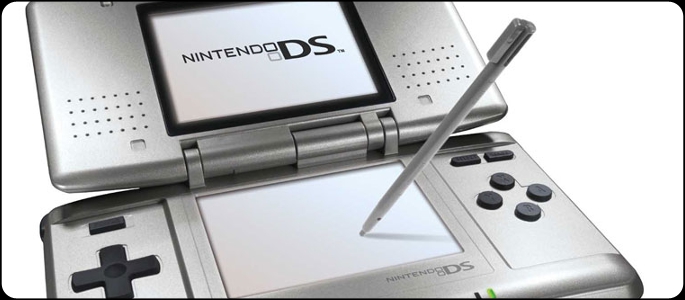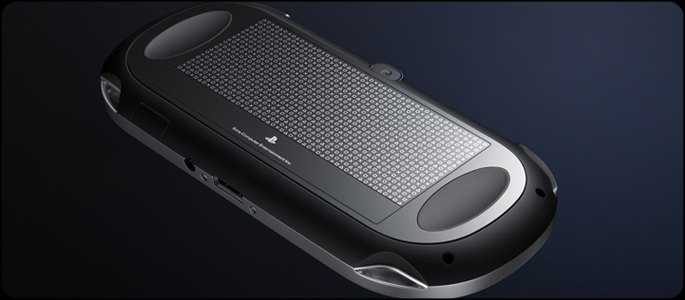Since the initial announcement of Sony’s Next-Generation Portable, aptly named the NGP, people have raved over its myriad of features, but they seem to be skipping over the most important one that’s actually on the back.
Sony’s NGP is an unbelievable device. From creating previously impossible graphics on a portable system, to the dual thumbsticks, to its social networking features, the machine seems set on revolutionizing the portable gaming market. The massive OLED touchscreen on the front all the while doesn’t actually seem all that special. Sure it looks phenomenal, but touchscreens seem to be everywhere now. They’re on practically every smartphone, personal media device, and even some personal computers. Ever since the unveiling of the original iPhone in 2007, multitouch devices have completely saturated the market. That’s not to say it’s a bad thing though. Although ubiquitous, touchscreens have completely changed the way we interact with our devices. The pinch, stretch, and swipe gestures have become second nature to our culture. But the iPhone wasn’t the first to introduce the touchscreen to mobile gaming. That was pioneered, if not introduced, by Nintendo.
Come with me, if you dare, back to a different time. Back a few years to 2004. This was the year the original Nintendo DS was announced, as well as its rival the Sony PlayStation Portable. Gamers found themselves in two different camps: the gimmicky and childish Nintendo device, or the movie-watching, music-playing, PS2-quality beast. The true gamer chose the PSP. It had real games to offer, giving players similar experiences as it’s console-based brethren. The DS by comparison had… Super Mario 64. The DS had actually been criticized for it’s very defining feature: the touchscreen. No one knew what to do with it. It seemed too awkward to use effectively. Why fix something that isn’t broke? Directional pads or analog sticks had become the norm for traditional gaming, and it may never go away. The touchscreen on the DS was how Nintendo would sign its own death certificate, that was certain.
 Fast forward back to 2011. Sales seem to have shown a different story. While the PSP has sold over 64 million units, a very respectable number indeed, the Nintendo DS has sold nearly double that many. Now there are many reasons people will argue with the difference in numbers, blaming things like price and piracy, but I believe that it’s something much more fundamental to the actual medium: the games. When the DS launched in the last quarter or 2004, it had a relatively meek launch lineup. A redone Nintendo 64 game, racers, sports, and mostly other mini-game ridden titles. The device was new, even to developers that had early development kits, so the technology had to be experimented with to fully understand its potential as a gaming machine. And that’s exactly what they did. DS developers took risks, and once they began to create unique games exclusively for the platform, the DS began to take off. Touchscreen controls were no longer something tacked on to games, but uniquely integrated to make the title interesting. By creating brand new types of games and experiences that could only be achieved on that platform really caused the sales to skyrocket. The PSP on the other hand…well…
Fast forward back to 2011. Sales seem to have shown a different story. While the PSP has sold over 64 million units, a very respectable number indeed, the Nintendo DS has sold nearly double that many. Now there are many reasons people will argue with the difference in numbers, blaming things like price and piracy, but I believe that it’s something much more fundamental to the actual medium: the games. When the DS launched in the last quarter or 2004, it had a relatively meek launch lineup. A redone Nintendo 64 game, racers, sports, and mostly other mini-game ridden titles. The device was new, even to developers that had early development kits, so the technology had to be experimented with to fully understand its potential as a gaming machine. And that’s exactly what they did. DS developers took risks, and once they began to create unique games exclusively for the platform, the DS began to take off. Touchscreen controls were no longer something tacked on to games, but uniquely integrated to make the title interesting. By creating brand new types of games and experiences that could only be achieved on that platform really caused the sales to skyrocket. The PSP on the other hand…well…
The PSP’s greatest strength, as well as its greatest weakness, was that it was very similar to the PS2. It truly created a console-like experience for your portable gaming needs. Even from the beginning of the PSP’s life there have been PS2-like titles, like Grand Theft Auto, God of War, Metal Gear Solid, and Final Fantasy. Why was this a problem you ask? It’s something that I hear more and more when I ask people about their portable gaming habits.
“Why should I want to play a portable game? If I don’t travel a lot, I’m just playing it at home. And if I’m playing at home, they why wouldn’t I just play my console?”
It’s not to say that the games it does have aren’t great. I believe that Kingdom Hearts: Birth by Sleep is the best incarnation of the franchise, and MGS: Peace Walker has been lauded for being a near-perfect translation of the console-based games. But if you have to choose between a console game with HD graphics, trophies, and online functionality, or buying a portable device just to play the next iteration of a series in a last-generation form, most people won’t make that new investment continue reading >>





